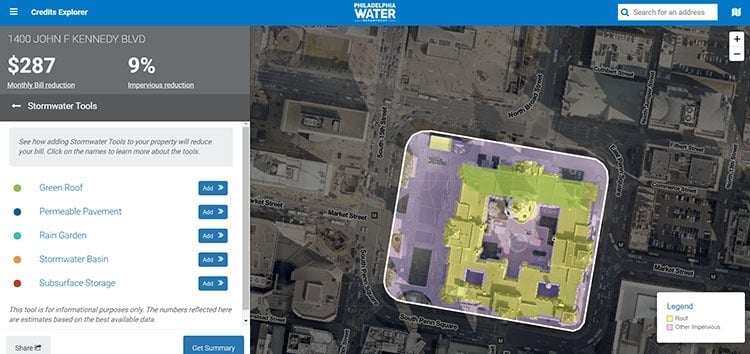7 Smart City Urban Planning Ideas Using IoT
Table of contents
Table of contents
- Smart City Urban Planning Acquisitions
- Street-Level Mapping
- Sim City for Smart City Urban Planning
- Digital Bulletin Boards
- Getting the Public Involved in Smart City Urban Planning
- Automating Analysis for Smart City Urban Planning
- Geospatial Solutions for Smart City Urban Planning
- Location, Location, Location
- Conclusion

One of the things that you learn after being a digital nomad for a while is that some cities are much better designed than others. There is a certain aesthetic quality to a well-laid out urban center like New York City compared to, say, Boston, which one article on the topic of city grids said appears as if “a group of city planners decided to lay out the roads one day by taking turns pissing blindfolded onto a scroll of parchment – during an earthquake.” The idea of urban planning dates back to Egypt and its contemporaries, as archaeologists have found evidence of paved streets laid out at right angles in a grid pattern, all leading to the same slave brothel. Today, we have internet porn. And we have the Internet of Things (IoT), which is becoming increasingly integral to smart city urban planning.
The whole idea behind using IoT infrastructure – sensors, big data, and analytics that help manage everything from traffic and parking to buildings and baseball stadiums – is to make cities more efficient. The more efficient the city, the theory goes, the more sustainable it will be in a future where we’re harvesting methane-munching bacteria or growing bugs to feed 10 billion or more people by mid-century. Earlier this year, the big brains at data research firm CB Insights produced one of their iconic market maps on companies developing smart city solutions:

You’ll notice there’s a whole category devoted to smart city urban planning startups, which can tell us something about the possible breadth of this emerging industry to shape the way a city is developed – and how far an analyst can stretch the definition of urban planning to complete a market map.
For example, one of the startups on the list, Berlin-based Infarm, is one of many vertical farming startups that we’ve covered in the past. Infarm has since raised an additional $100 million since we profiled the company. CB Insights also lists Square Roots, another high-tech vertical farming startup that has raised $6.5 million for its shipping container farms. At the helm is a somewhat familiar name, Kimbal Musk, the brother of a more familiar CEO who favors Twitter and flame throwers. A QR code on the back of the Brooklyn-based company’s products will give you background info on how the herb was grown. While many of these vertical farms use sensors, big data, and analytics to optimize yield, it’s unclear how exactly Infarm, Square Roots or its cohort are directly involved in the activity of smart city urban planning. Maybe the smart city of tomorrow grows all its own food?
Smart City Urban Planning Acquisitions

Another San Francisco startup called Civic Insight helps cities make their data on buildings and homes – think permits and other zoning or construction information – easily accessible to the public. It’s sort of like Zillow for nosy neighbors. Yet another San Francisco company, Accela, took possession of Civic Insights more than four years ago. Accela offers various solutions for cities to digitize and automate processes like building permits and cannabis licensing. The 20-year-old company, which had raised about $215 million and absorbed 10 startups over that time, was itself acquired by Berkshire Partners in 2017. That now leaves us seven companies still to cover.
Street-Level Mapping


In the case of a small town that needed to inventory its street signs, Mapillary’s cameras and machine vision system identified 5,000 traffic signs. The data could then be used to address repairs and fix obstructions, like your nosy neighbor’s unruly azalea bushes.
Sim City for Smart City Urban Planning


The company has partnered with California to bring the smart city urban planning tool to more than 500 cities and government agencies free of charge.
Digital Bulletin Boards

an agenda a cause can post to. The 42-inch displays are solar-powered. There goes a million jobs in the flyposting industry.
Getting the Public Involved in Smart City Urban Planning

For instance, it helped Mesa, Arizona build support for a $300 million bond to improve city facilities and services last year.
Automating Analysis for Smart City Urban Planning

Geospatial Solutions for Smart City Urban Planning
We’ve written quite a bit over the last few years about the value that companies are getting from satellite imagery. Geospatial intelligence startups like San Francisco-based Planet apply machine-learning algorithms to space-based pictures to help farmers grow better crops or insurance companies spot fraud. In fact, there’s a long list of companies doing this sort of geospatial analytics. Philadelphia-based Azavea has been in the business since 2000 apparently, specializing in urban planning projects, especially in the hometown of Rocky Balboa.

For instance, the company built an application (above) where non-residential building owners can sketch out ideas using up to five different stormwater tools such as green roofs or permeable basins that show how such improvements can help reduce monthly stormwater bills.
Location, Location, Location
Finally, Paris-based Cityzia, founded in 2017, is the Zillow version of online dating in that it helps people find their perfect home through an online Q&A that matches your preferences – quiet neighborhood or party central – against a database of properties. It’s French-centric and seems to imply that the cities of tomorrow will become a small collection of tribes, where each lifestyle flourishes among its own type. The bigger cities get, the more important it is for people to get along. A great example of this can be found in Hong Kong at the local dog park where you’ll see a dozen dogs playing together with hardly a bark to be heard. When you live in small cramped spaces where you can hear your neighbors cough, even the pets learn how to play well with others.
Conclusion
Speaking of CB Insights: The firm projects that within the next five years, the smart city market will be worth $1.4 trillion. You’ll notice that the market map is tilted heavily toward transportation. That’s not surprising, given that traffic congestion hit the U.S. economy for about $87 billion in losses last year, according to the World Economic Forum. Meanwhile, the digital road is being laid for the eventual arrival of self-driving cars and trucks. Smart city urban planning will be a key technology to integrate smart mobility with other smart infrastructure, especially as the 5G revolution helps connect it all together.
Sign up to our newsletter to get more of our great research delivered straight to your inbox!
Nanalyze Weekly includes useful insights written by our team of underpaid MBAs, research on new disruptive technology stocks flying under the radar, and summaries of our recent research. Always 100% free.














